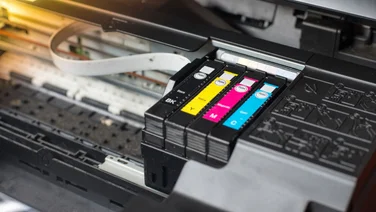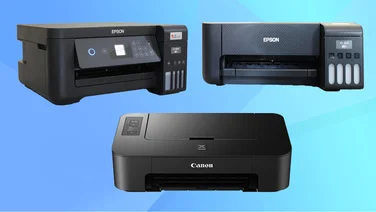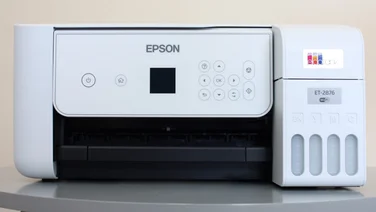To help us provide you with free impartial advice, we may earn a commission if you buy through links on our site. Learn more


When we finish testing a printer and have extensive notes it usually means that there’s plenty to say about it. Unfortunately, in the case of the Photosmart Premium C310 much of it is negative.
It’s a smart MFP that’s a little bigger than average. There’s an extra black ink tank that’s used in darker colour prints. Control is via touches and gestures on a huge 10.9cm touchscreen, which proved to be one of the most frustrating we’ve ever used.

We’ve used touchscreens on other HP printers, but while some seemed unresponsive, the Photosmart Premium’s appeared to be ignoring us altogether. During setup it took several attempts for it to acknowledge our language selection. Things progressed normally for a while after that until we came to set up the wireless network. After a few moments the screen went blank and it became apparent that the printer had hung.
We were able to complete the setup after a restart, but the screen remained slow to respond to most inputs, and sometimes failed to acknowledge them at all. Many of the Premium’s menu elements rely on scrolling and other animations, but these often stuttered rather than moving smoothly. This was noticeable when trying to scroll through the photos on an inserted memory card, where the screen contents didn’t follow a dragged fingertip in a predictable way, leading to frustration and a couple of unintended commands.
Unfortunately, it isn’t just the touchscreen that’s slow and frustrating. While printing on plain paper was rapid, with draft text reaching 19.7ppm and colour pages 4ppm, the C310 was so slow when printing photos that we had to double-check we had it connected via USB. We print all of our PC photo tests at a printer’s highest possible resolution which, in this case, involves manually enabling the Maximum DPI mode from one tab in the driver, selecting it from the features tab and dismissing two warnings each time you do so.
HP’s TWAIN scan interface works in a different way to the other manufacturers’. Each preview scan takes a fairly long 24 seconds, but it’s done at 200dpi so it’s very quick to save a final scan at anything up to that resolution. A pop-up dialogue actively tries to put you off scanning at more dots per inch, since doing so forces a rescan. Capturing a 6x4in photo at 1,200dpi took two minutes and 42 seconds, one of the slowest results we’ve seen. While low-resolution scans were fine, higher resolutions weren’t worth waiting for, with images exhibiting crude and unwelcome sharpening.

Fortunately the C310’s print quality is much better. Black text was excellent, and colour prints on plain paper were let down only by some very subtle banding. Happily, photos were a marked improvement over HP’s cheaper MFPs, with sharper detailing, a more accurate and consistent colour balance, and far superior detail preservation among dark tones.
Despite this, it’s hard to escape the impression that the Photosmart Premium is the victim of its own sophistication. While a well-implemented touchscreen can be a joy to use, done badly it can be a step backwards from physical buttons. Without good all-round performance to fall back on, the C310 is hard to like and impossible to recommend. For around £30 less, the Epson Stylus Photo PX720WD is a better buy.






